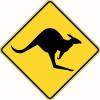Two questions related only by the the fact that they deal with drawboring.
1. Do you really need drawbore pins like those sold by LV and LN? I find video demonstrations of drawboring that don't use a metal drawbore pin; they just drill the offset holes and drive the wooden pin into place.
2. As I understand it, with you construct an angled M&T joint, the "front" side of the tenon is cut at 90 degrees to the mortised piece. If it were cut at an angle, the tenon would act as a wedge that would tend to split the mortised piece. But if you drawbore an angled tenon, do you offset the holes so that you pull the tenon into the mortise at 90 degrees or at an angle?





 Reply With Quote
Reply With Quote

 .
.



